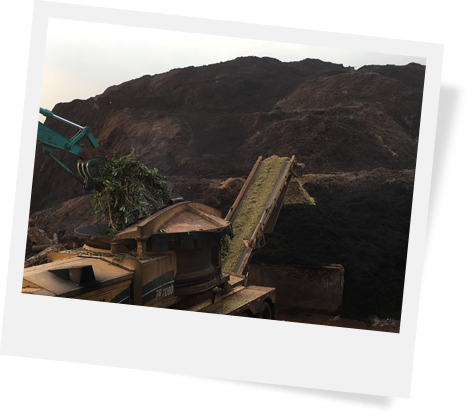Compost can be used in many ways, as mulch around trees and shrubs, to keep the moisture in, to prevent weeds from growing around trees and shrubs. Mature compost is good for incorporating into the soil at the time of planting and can be used in the planting areas of landscapes. It can be used extensively in vegetable gardens to imporve the organic matter content in the soil. It can be used for houseplants, for starting seeds in planting beds or flats, or made into a compost tea for watering plants. Some key benefits that can be derived from using compost in soil are listed below.
In Singapore, landscape contractors are encouraged to use compost recycled from local horticultural wastes. The compost produced locally has shown wide variation in certain properties that are linked to quality.
Tp overcome such inconsistencies, and to give producers and consumers more choices in the products offered, three categories of compost proposed - Compost class 'A' and Compost class 'B'.
Compost classified as 'class A' is of higher quality. Category A compost can be used for application in high value agriculture, horticulture, residential gardens and in nurseries. Category B compost can be used in most agriculture, horticulture applications and this grade of compost is the minimum quality expected of good compost.
| Measurement | Compost A | Compost B |
|---|---|---|
| pH | 6.0 to 7.0 | 5.0 to 8.0 |
| Electrical conductivity (m/Scm) | < 4.0 | < 10.0 |
| Organic Matter % (Dry wt) | 30 - 60% | 30 - 60% |
| C/N ratio | > 18 & < 25 | > 12 & < 35 |
| Particle size (mm) | 98% passing through < 3 mm sieve | 98% passing through < 6 mm sieve |
| Moisture content (%) | Min 35 Max 45 |
Min 25 Max 55 |
| Foreign Matter/ Physical Contaminants | < 0.5% | < 1% |
| Pathogens | 1. Free from Salmonella enteriditis and Salmonella typhimurium 2. Faecal coliforms < 1000 MPN/g |
|
| Pests/ invertebtates | No live fly pupae, larvae, and snails. | |
Call us to learn more about our compost at +65 6287 3390.
Composting is a process whereby organic materials are transformed microbiologically. This generally includes a thermophilic phase where the materials are pasteurized. In Kiat Lee, heat-based composting is the principal composting method. These are -
